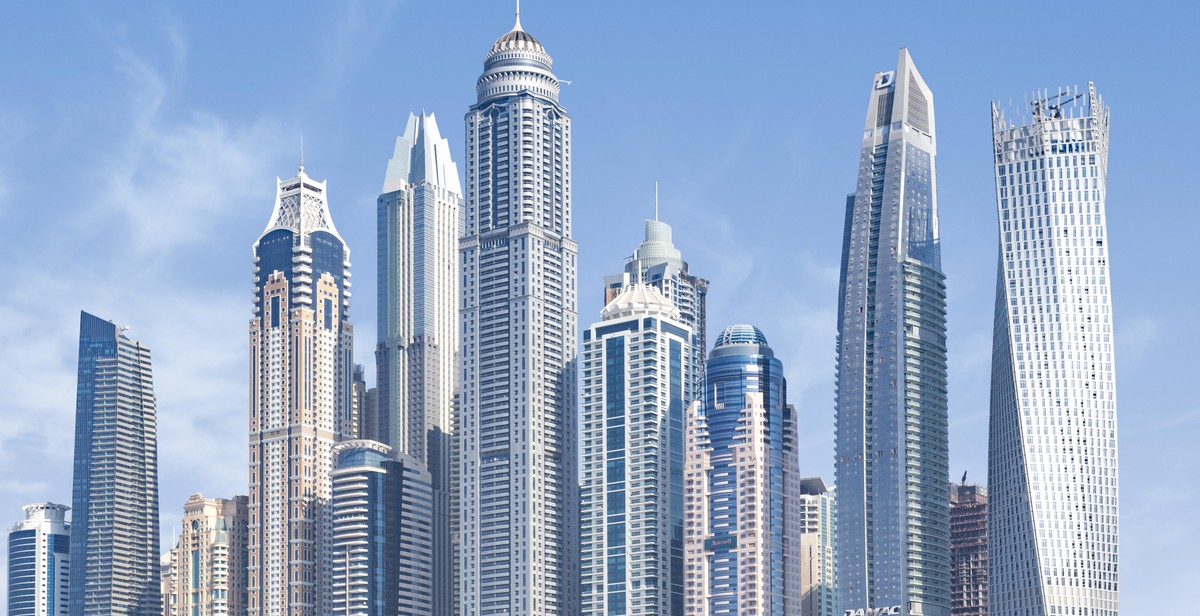The Importance of Sustainable Office Architecture
Designing a sustainable office architecture is crucial in promoting productivity and energy efficiency in the workplace. With the growing concern for climate change and its impact on the environment, it is essential to adopt sustainable practices in all areas of life, including office design.
Sustainable office architecture involves the use of eco-friendly and energy-efficient materials, as well as the implementation of innovative designs that reduce energy consumption. By incorporating natural lighting, proper ventilation, and energy-saving equipment, sustainable office architecture can significantly reduce energy costs and carbon emissions.
In addition to its environmental benefits, sustainable office architecture also promotes employee productivity and well-being. A well-designed office space can improve employee satisfaction, reduce stress levels, and enhance creativity, leading to increased productivity and a more positive work environment.
Moreover, sustainable office architecture can also contribute to a company’s corporate social responsibility (CSR) goals, demonstrating a commitment to environmental sustainability and social responsibility.
- By reducing energy consumption and carbon emissions, sustainable office architecture helps to mitigate the effects of climate change on the environment.
- By promoting employee productivity and well-being, sustainable office architecture can enhance a company’s performance and reputation.
- By demonstrating a commitment to environmental sustainability and social responsibility, sustainable office architecture can contribute to a company’s CSR goals and enhance its brand image.
Overall, sustainable office architecture is not only environmentally responsible but also economically and socially beneficial. By designing a sustainable office, companies can reduce their carbon footprint, improve employee productivity and well-being, and demonstrate a commitment to environmental sustainability and social responsibility.

Step 1: Conduct a Sustainability Assessment
Conducting a sustainability assessment is the first step towards designing a sustainable office architecture. This assessment involves evaluating the building’s energy and water usage, material usage, indoor air quality, and carbon footprint. The assessment provides a baseline for identifying areas of improvement and developing a sustainable design strategy.
Assessing Energy and Water Usage
The assessment of energy and water usage involves analyzing the building’s utility bills, including electricity, gas, and water usage. This analysis helps identify areas of high energy and water consumption and opportunities for reducing usage. For example, replacing traditional light bulbs with LED bulbs and installing low-flow faucets and toilets can significantly reduce energy and water consumption.
Evaluating Material Usage
The evaluation of material usage involves assessing the type and quantity of materials used in the building’s construction and interior design. This assessment helps identify opportunities for using sustainable materials, such as recycled or biodegradable materials, and reducing waste. Additionally, using materials with low volatile organic compound (VOC) emissions can improve indoor air quality.
Analyzing Indoor Air Quality
The analysis of indoor air quality involves evaluating the building’s ventilation system, air filtration, and the presence of pollutants such as VOCs and mold. Poor indoor air quality can cause health problems and decrease productivity. Therefore, designing a ventilation system that provides fresh air and using low VOC materials can improve indoor air quality.
Determining the Building’s Carbon Footprint
The determination of the building’s carbon footprint involves calculating the amount of greenhouse gas emissions produced by the building’s operations and construction. This assessment helps identify opportunities for reducing carbon emissions through energy-efficient design and renewable energy sources.
Overall, conducting a sustainability assessment is crucial for designing a sustainable office architecture that promotes productivity and energy efficiency. It provides a foundation for developing a sustainable design strategy that addresses energy and water usage, material usage, indoor air quality, and carbon footprint.

Step 2: Incorporate Sustainable Design Principles
Designing a sustainable office requires a holistic approach that integrates environmentally responsible practices into every aspect of the design. This includes maximizing daylight and natural ventilation, using sustainable materials and finishes, designing for energy efficiency, and implementing water conservation strategies.
Maximizing Daylight and Natural Ventilation
Natural light and fresh air are essential for creating a healthy and productive work environment. By maximizing daylight and natural ventilation, you can reduce the need for artificial lighting and air conditioning, which can significantly reduce energy consumption and costs. Consider incorporating skylights, large windows, and operable vents to optimize natural light and air circulation.
Using Sustainable Materials and Finishes
The materials and finishes used in your office design can have a significant impact on the environment. Choose sustainably sourced and recycled materials whenever possible, such as bamboo, cork, or salvaged wood. Use low-VOC paints and finishes to improve indoor air quality and reduce harmful emissions. Consider using materials with a high thermal mass, such as concrete or stone, to regulate temperature and reduce the need for heating and cooling.
Designing for Energy Efficiency
Designing for energy efficiency is key to reducing your office’s carbon footprint. Incorporate energy-efficient lighting, HVAC systems, and appliances into your design. Use natural shading devices, such as awnings or shading fins, to reduce solar heat gain and minimize cooling needs. Consider using renewable energy sources, such as solar panels or wind turbines, to power your office.
Implementing Water Conservation Strategies
Implementing water conservation strategies can help reduce your office’s water consumption and costs. Use low-flow fixtures, such as toilets and faucets, to reduce water usage without sacrificing performance. Consider using rainwater harvesting systems to collect and reuse rainwater for irrigation or other non-potable uses. Use drought-tolerant landscaping to minimize water needs and reduce maintenance costs.
By incorporating these sustainable design principles into your office architecture, you can promote productivity, energy efficiency, and environmental responsibility.

Step 3: Integrate Technology and Innovation
Integrating technology and innovation is an essential step in designing a sustainable office architecture. This involves incorporating renewable energy systems, smart building technology, and biophilic design.
Installing Renewable Energy Systems
Installing renewable energy systems in your office building is one of the most effective ways to reduce energy consumption and promote sustainability. Renewable energy systems such as solar panels, wind turbines, and geothermal systems can provide clean energy to power your office, reducing your reliance on non-renewable energy sources. This not only helps to reduce your carbon footprint but can also save you money in the long run by lowering your energy bills.
Using Smart Building Technology
Smart building technology can help to optimize energy efficiency and improve the overall functionality of your office. This technology includes automated lighting and temperature control systems, occupancy sensors, and smart power strips. These systems can help to reduce energy waste by automatically adjusting lighting and temperature settings based on occupancy and natural light levels. Smart power strips can also help to reduce standby power consumption by turning off electronics when not in use.
Incorporating Biophilic Design
Biophilic design is a design approach that incorporates natural elements into the built environment. This includes the use of natural materials, plants, and natural lighting. Biophilic design has been shown to improve employee well-being, productivity, and creativity, as well as reduce stress and absenteeism. Incorporating biophilic design into your office architecture can also help to reduce energy consumption by utilizing natural lighting and ventilation systems.
Conclusion
Integrating technology and innovation into your office architecture can help to promote sustainability, improve energy efficiency, and enhance employee well-being and productivity. By installing renewable energy systems, using smart building technology, and incorporating biophilic design, you can create a sustainable office environment that benefits both your business and the environment.

Step 4: Implement Sustainable Practices
Implementing sustainable practices in your office is crucial to promoting productivity and energy efficiency. Here are three ways to do it:
Encouraging Sustainable Transportation
One way to reduce your office’s carbon footprint is to encourage sustainable transportation options. Consider providing incentives for employees who bike, walk, carpool, or use public transportation to get to work. You can also install bike racks and showers to make it easier for employees to bike or walk to work. Additionally, consider offering remote work options to reduce the number of cars on the road.
Developing a Waste Reduction Strategy
Developing a waste reduction strategy can help your office reduce its environmental impact. Start by conducting a waste audit to determine what types of waste your office generates. Then, develop a plan to reduce, reuse, and recycle. This can include implementing a composting program, using reusable dishes and utensils, and reducing paper usage by going digital.
Promoting Sustainable Behavior among Employees
Finally, promoting sustainable behavior among employees is crucial to creating a sustainable office culture. Consider implementing a green team to lead sustainability initiatives, providing education and training on sustainable practices, and recognizing and rewarding employees who make sustainable choices. You can also conduct regular energy audits to track your office’s progress and identify areas for improvement.
| Practice | Description |
|---|---|
| Encouraging Sustainable Transportation | Provide incentives for sustainable transportation options and consider remote work options. |
| Developing a Waste Reduction Strategy | Conduct a waste audit and develop a plan to reduce, reuse, and recycle. |
| Promoting Sustainable Behavior among Employees | Implement a green team, provide education and training, and recognize and reward sustainable behavior. |
Implementing these sustainable practices can help your office reduce its environmental impact, promote productivity, and save money on energy costs. By prioritizing sustainability, you can create a healthier and more sustainable workplace for your employees and the planet.

Conclusion
Designing a sustainable office architecture is not only beneficial for the environment but also for the productivity and well-being of employees. By incorporating energy-efficient features and promoting sustainable practices, businesses can reduce their carbon footprint and save on energy costs in the long run.
Key Takeaways
- Integrating natural lighting and ventilation can improve the indoor air quality and reduce the need for artificial lighting and HVAC systems.
- Using eco-friendly materials and designing for flexibility can reduce waste and allow for future adaptations to the office space.
- Encouraging sustainable practices such as recycling and reducing paper usage can promote a culture of sustainability within the workplace.
- Collaborating with architects and engineers who specialize in sustainable design can ensure that the office architecture is optimized for energy efficiency and environmental impact.
Looking Ahead
As the world becomes more conscious of the impact of human activities on the environment, sustainable office architecture will become increasingly important. Businesses that prioritize sustainability in their office design not only contribute to a healthier planet, but also attract and retain employees who value sustainability and social responsibility. By taking small steps towards sustainability and continuously improving, businesses can make a significant impact on the environment and their bottom line.
